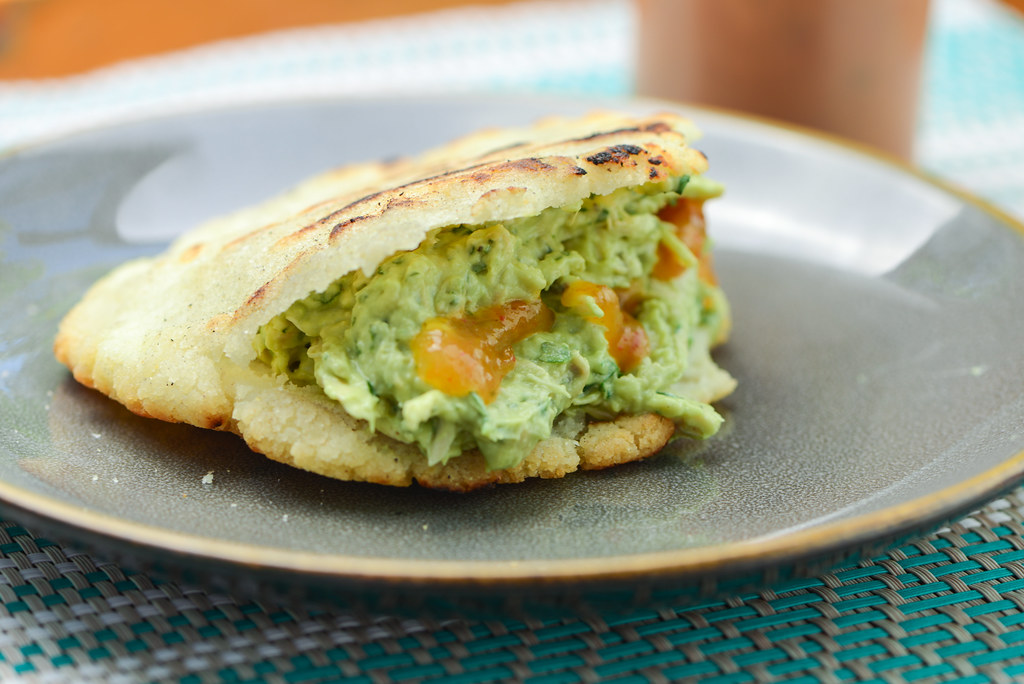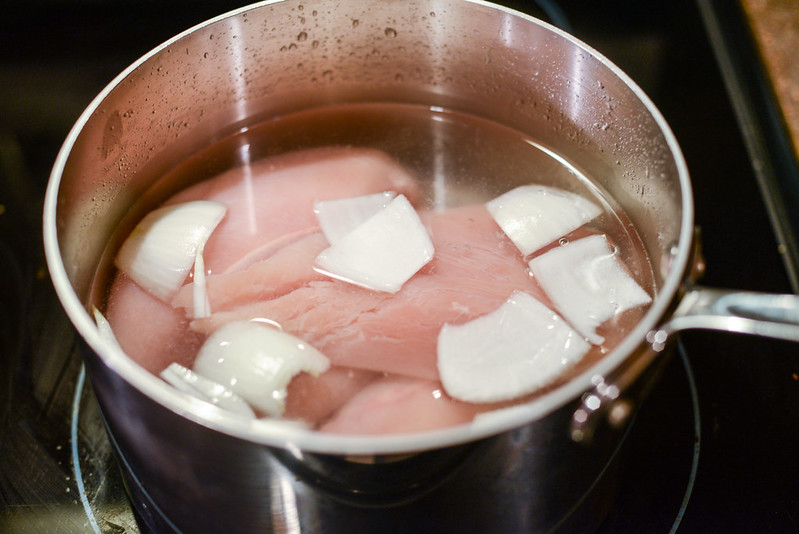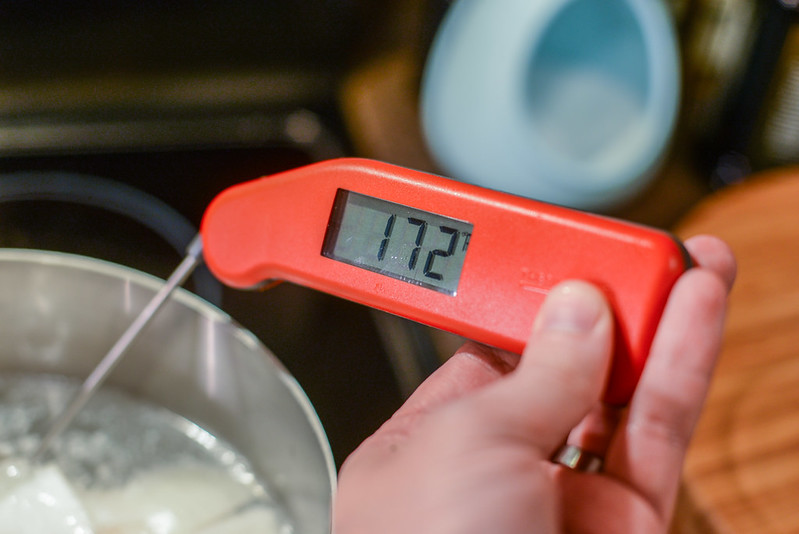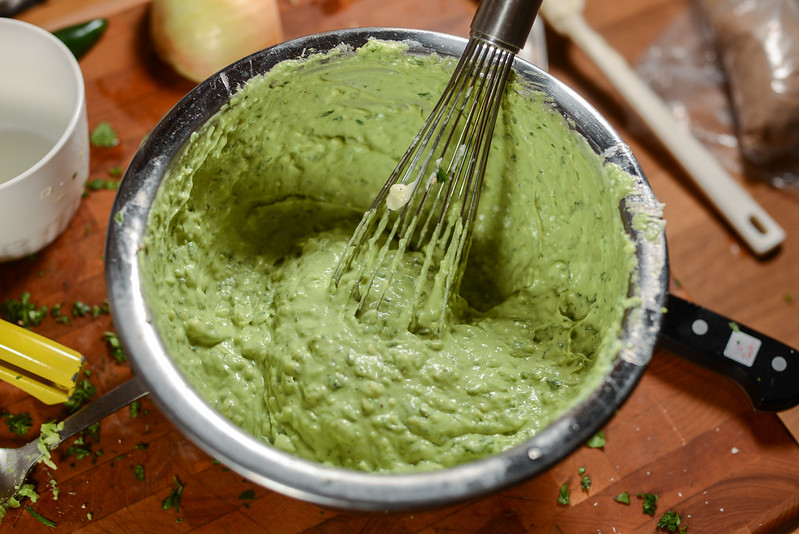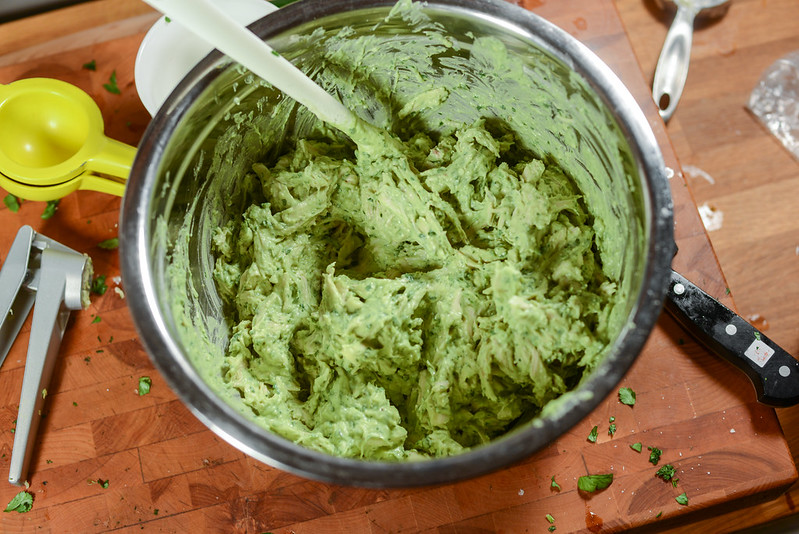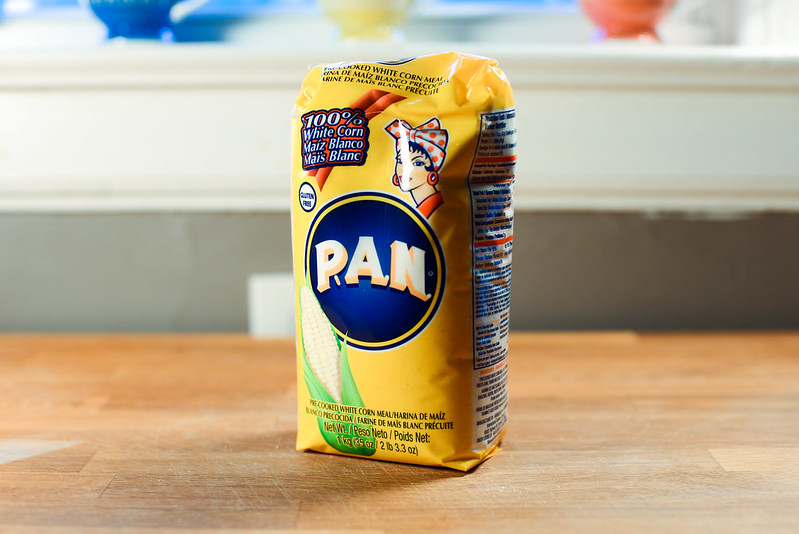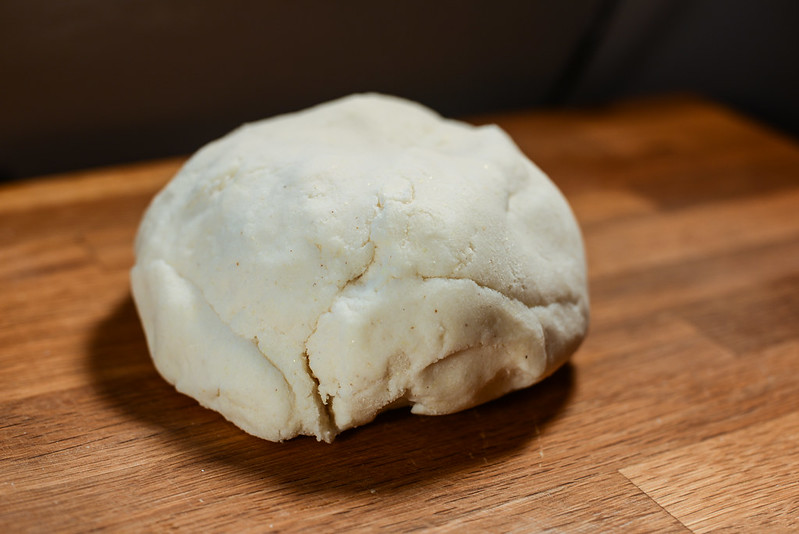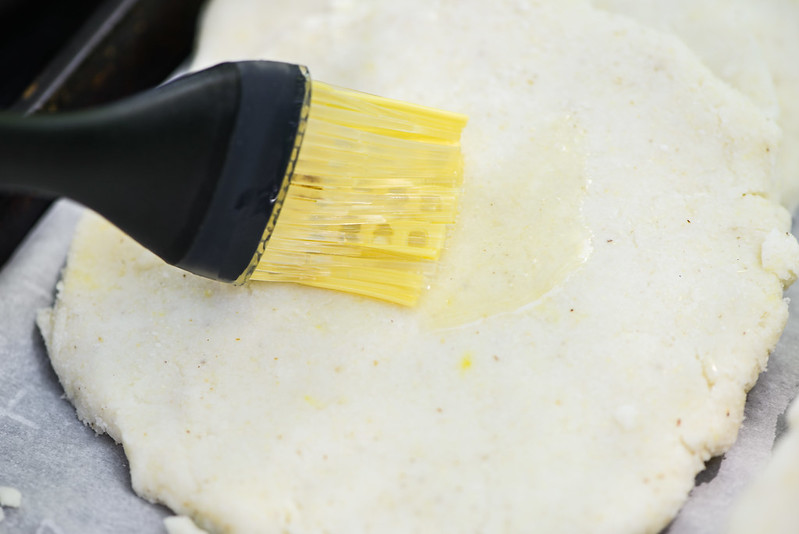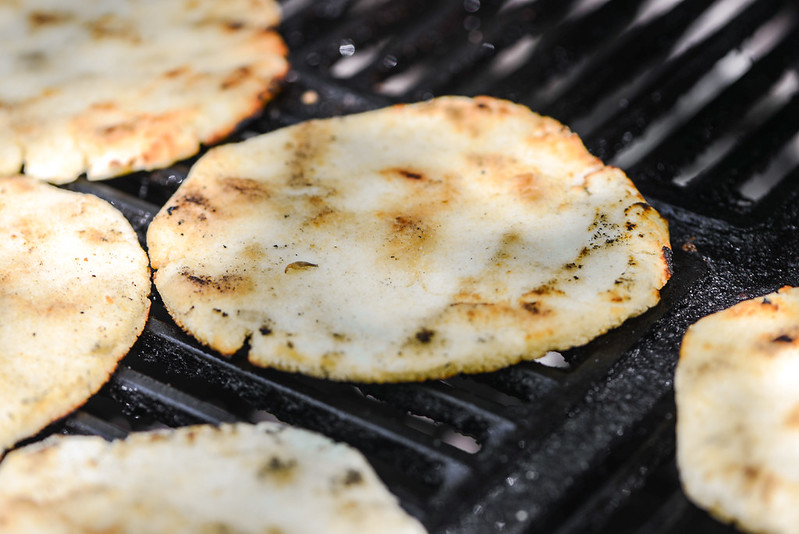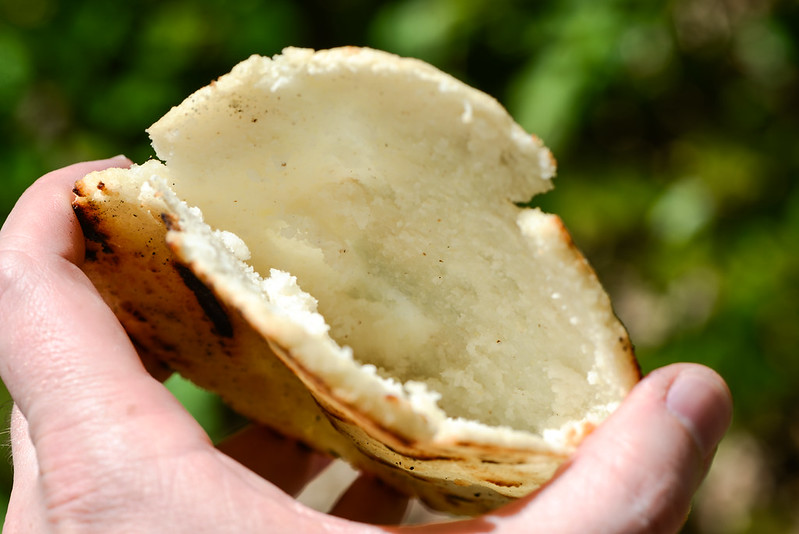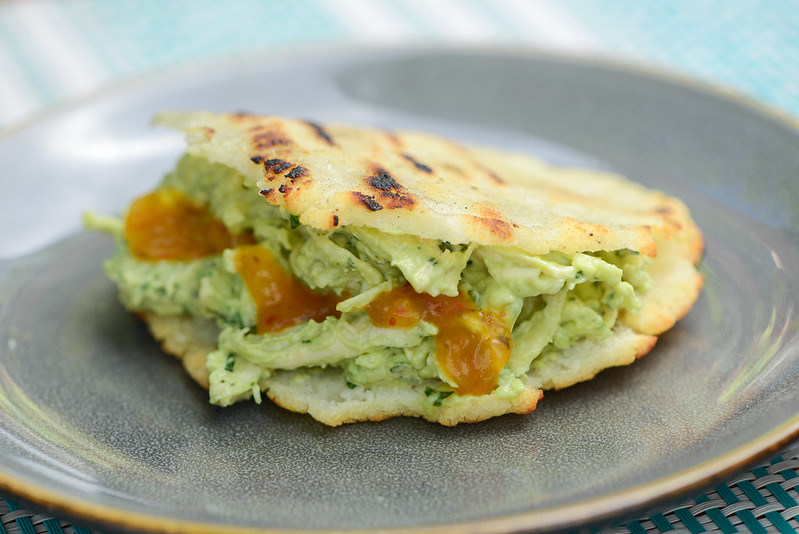Reina Pepiada Arepas
Ever order one of your favorite things while not at your normal restaurant and just can't shake that, while it may be good, it's not exactly what you want? That's what happened with me after moving to Durham with reina pepiada arepas—Venezuelan corn cakes stuffed with an avocado chicken salad. I was pleasantly surprised I could even get reina arepas here in multiple locations, but none are what I'm used to getting at my old haunt in New York, Arepas Cafe. So I had to take matters into my own hand and learned how to make them myself, and the results were incredibly close to ideal.
Like most chicken salads, this one starts with poached chicken. It's a disservice to yourself and the chicken to think boiling a couple chicken breasts is all you need to do. This can lead to dry, cardboard-y meat that's not a good foundation for a great chicken salad.
For optimal results, the chicken needs to be cooked at a low temperature to gently raise its internal temperature and more evenly cook the meat. A water temperature between 150-170°F is perfect for this (I didn't worry that mine was just a couple degrees high at first). At this relatively low temperature, it takes about an hour for the chicken to reach an internal temperature of 150°F, which is when you want to pull it for maximum juiciness. I used skinless, boneless breasts here, but if you choose bone-in breasts, after the chicken is done, you'll have the start of a pretty decent chicken broth.
After my chicken was finished, I put it in the fridge to cool off. Once it was chilled enough to handle comfortably, I pulled the chicken by hand and it was as tender and juicy as can be. To me, this meant that when paired with the dressing, it was hopefully destined for greatness.
I've seen reina dressings heavy up on all sorts of additional mix-ins like bell peppers, jalapeños, onions, and more. At Arepas Cafe though, the mixture seems pretty minimal and that's part of the attraction for me. So I appropriately made this one composed of no more than avocados, mayo, lime juice, cilantro, garlic, salt, and pepper.
It may have been short on ingredients, but it was hella tasty. After mixing in the chicken and giving it a try, it felt just as if I was back at Arepas Cafe and left me wondering why the local reina arepas I get here in Durham can't be like this.
Of course the filling is only half the battle, I also needed the corn cake vessel in which to stuff it in. For that, there's no better weapon of choice than Harina P.A.N.—a Venezuelan white corn masarepa that I would guess is the foundation of just about any arepa you've ever had.
The dough is nothing more than the masarepa mixed with a little oil and enough water to make it cohesive and soft, but not sticky. In my experience, a 50/50 masarepa and water combo results in the right texture for the dough, but I've had to add a little more water on occasion to ensure the dough wouldn't crumble around the edges when flattening them into arepas.
I learned my arepa method from Kenji's recipe over at Serious Eats, and my only qualm with it was the recipe was written to make four arepas, but I found when spilt into four, they turned out too thick for my liking. So I split the recipe into five arepas and, at least to me, this leaves me with an arepa with a perfect thickness when spread out into a roughly four-inch disc.
I utilized my grill for mass arepa production. Before introducing them to the flames though, I brushed a light coating of butter, which adds a nicely little richness to the exterior.
I first grilled the arepas over direct heat until each side developed some nice charring and became crisp on the outside—a little under five minutes per side. Then I moved them over to indirect heat, covered, and let them continue to cook until they were cook through, about ten minutes more.
The only challenging thing with making thinner arepas is slicing them open without accidentally creating puncture wounds. When placed on a cutting board and done with some care and time, it's not all that hard to cut out the required pockets for stuffing though.
After filling my arepa with the delicious avocado chicken salad, I was only one puzzle piece short of perfection—the hot sauce. The sauce at Arepas Cafe is thick, fruity, and incredibly spicy. Luckily, with a little sleuthing, I was able to pin down the exact sauce they use—Matouk's West Indian Hot Sauce—which was surprisingly readily available in multiple stores here. With that, I had an arepa that just about matched the inspiration—it had a smooth, bright, and substantial filling stuffed into a crisp, yet also tender arepa, with the spicy sauce that creates the contrast that ties the whole thing together.
You Might Also Like
Comments
-
Pedro I am venezuelan and your recipe is pretty genuine. Your reina pepiadas look delicious!!
